Do-it-yourself wardrobe on the balcony or loggia
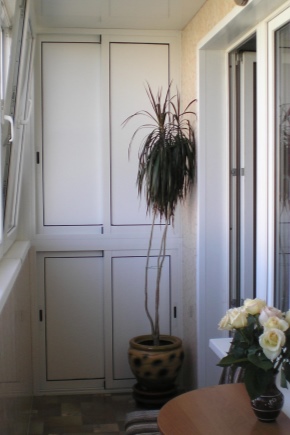
Balcony furniture can be made independently using a minimum of tools and materials. A self-made wardrobe will fully correspond to the design idea of the owner of the loggia. In addition, it serves as a guarantor of the quality of the finished product, since the process of creating furniture is controlled from start to finish.
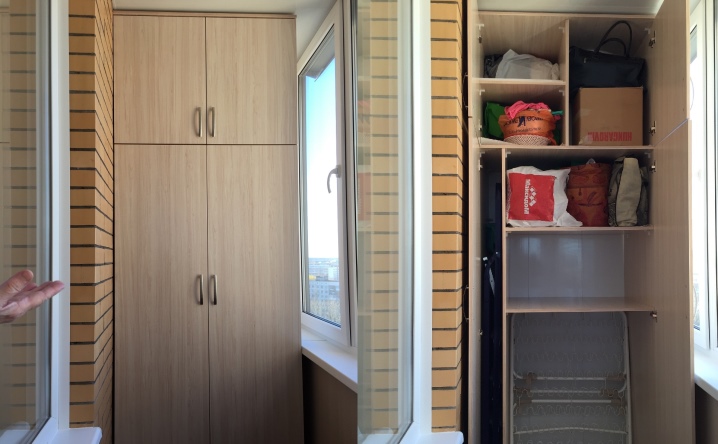
What can be made of?
The design of the cabinet depends on the chosen interior of the room. When a workshop is located on the loggia, the furniture should be spacious, have many shelves for storing small items, but less attention will be paid to aesthetic characteristics.
In contrast, when the balcony is furnished in a vintage or modern style, the appearance of the cabinet will come to the fore.
For the manufacture of furniture, different types of materials are used, on which the functional features of the product, its color, texture and service life will depend. Furniture made of natural wood looks the most noble and solid.
A budget option would be a wardrobe made of lining, chipboard or plastic.
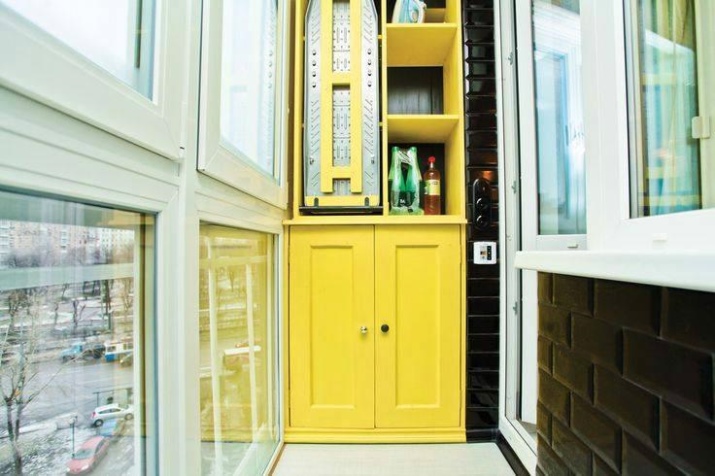
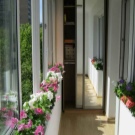
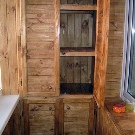

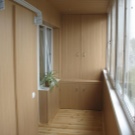
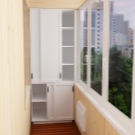
Wood
The material has the best performance and lasts longer. The tree is environmentally friendly, does not emit harmful substances into the air. Due to their excellent appearance, the boards do not require additional processing, they will look good even without paint or varnish. However, the material also has a number of disadvantages. These include high cost, massiveness, heavy weight. The wood burns, swells under the influence of moisture, and mold can appear on it.
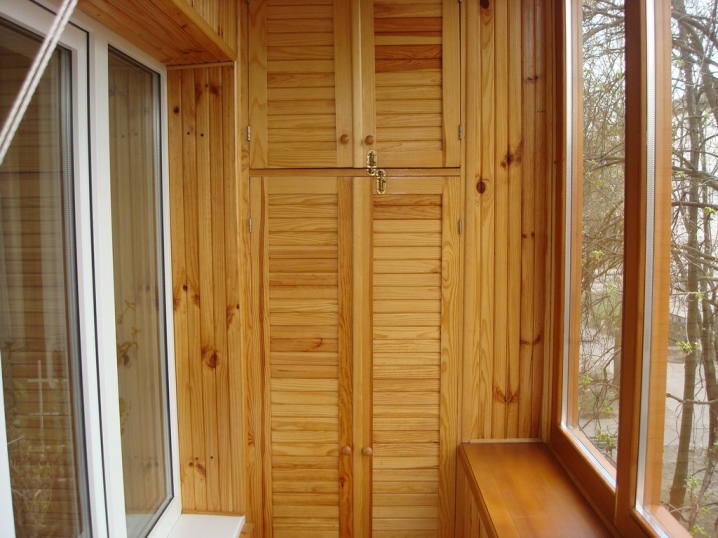
Drywall
Ease of installation is one of the main advantages of the material, which makes it possible to implement complex design solutions. Drywall bends well, therefore it is suitable for creating furniture with rounded corners or cylindrical decorative elements. The sheets are lightweight, so they are easy to carry, and the finished furniture can be moved without problems. The cost of the material is lower than that of wood, which makes it popular with consumers.
The disadvantages include the low strength of the fasteners and the relative fragility of finished products.
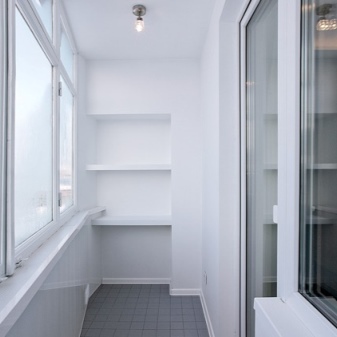
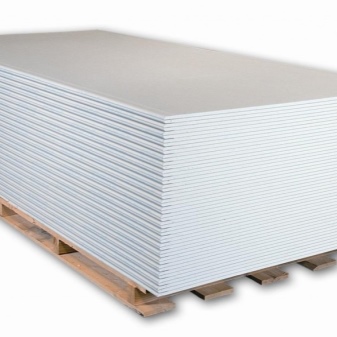
Plastic
This artificial material has a rich color range, can be decorated with patterns and designs. Plastic is malleable to processing, bends easily, differs in ease of installation, therefore beginners will be able to cope with it.
The practicality of the material is expressed in its low weight and ease of maintenance: when dirt appears, it is enough to wipe the surface of the furniture.
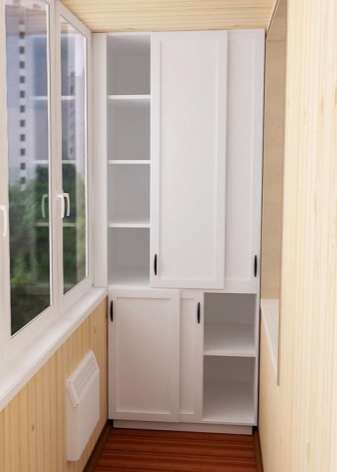

Modern plastic is resistant to UV light and retains color saturation even when exposed to sunlight. The material is not afraid of moisture, there are no scratches on it with minor mechanical stress. The advantage is the low weight of the finished furniture. The plastic cabinet can be easily disassembled for transportation to another location.
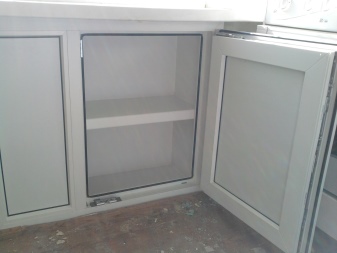
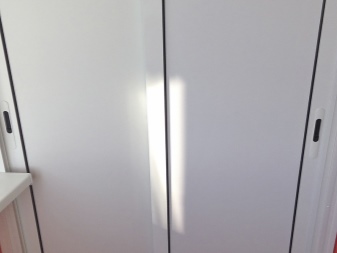
Chipboard
A board consisting of sawdust, shavings, chips. The advantages of the material include strength, reliability and density. The panels are easy to install and have a low price. The special structure of the slabs allows you to create furniture of any shape and size and unique design from them. Products made from this material are easy to transport and take up little space during storage.The panels are resistant to temperature extremes, humidity and sunlight.
Building materials are not as flammable as natural wood, they guarantee good sound and temperature regulation.
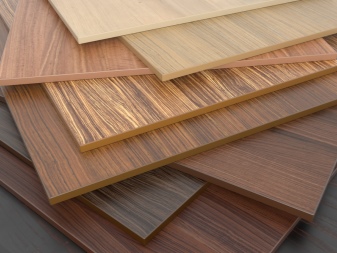
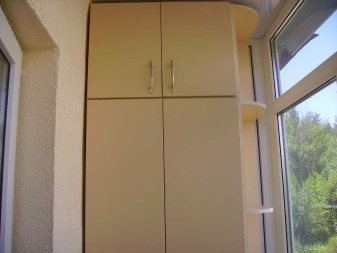
Plywood
Building material consisting of several layers of wood with a thickness of 0.5-10 mm. There are several types of plywood, depending on its operational characteristics and the specifics of the manufacture of panels. In particular, moisture-resistant, laminated and bakelite building materials are distinguished. Due to its structure, plywood is resistant to external influences. The panels are easy to work with: they are processed using the same tools that are used for natural wood. Parts of any size and shape are cut from plywood, if necessary, it can even be bent.
The material is resistant to high and low temperatures, it is not afraid of the effects of moisture.
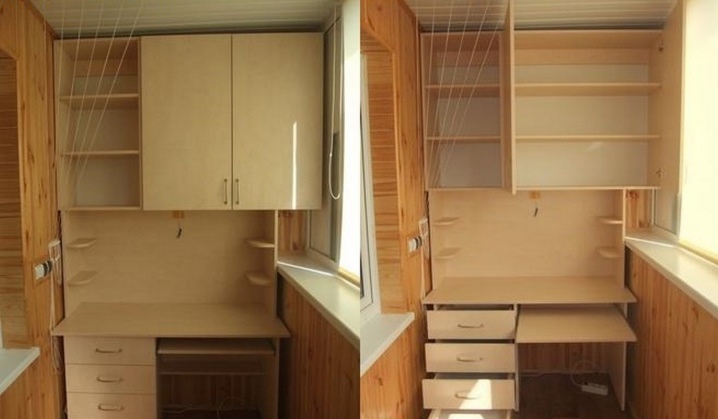
Lining
It is primarily used for interior and exterior decoration, but the material can also be used for the manufacture of furniture. In this case, a wooden frame is made, which is sheathed with clapboard. The advantages of the panels are strength and high aesthetic characteristics. Wooden lining looks good even without paint and varnish, therefore it is possible to save money at the stage of finishing work. To make the material resistant to humidity and temperature extremes, it is coated with special solutions.
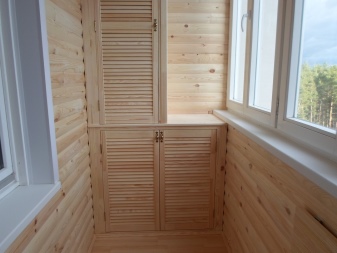
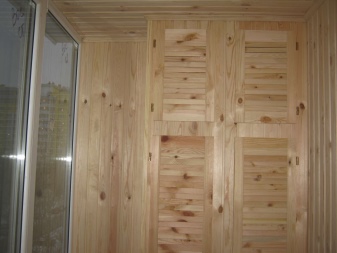
When creating furniture, it is permissible to combine different materials. It can be based on wood or chipboard, which are complemented by glass shelves and inserts. This option is also suitable for plastic - it can be decorated with metal elements.
Preparatory stage
Before proceeding with the manufacture of the cabinet, it is necessary to assess the general condition of the loggia and pre-plan its layout and interior. If the room is to be used as a residential one, it is pre-insulated, sheathed, and finished.
They are engaged in the creation of furniture only after the end of the repair work: they are determined with the cabinet model, purchase materials and prepare tools.
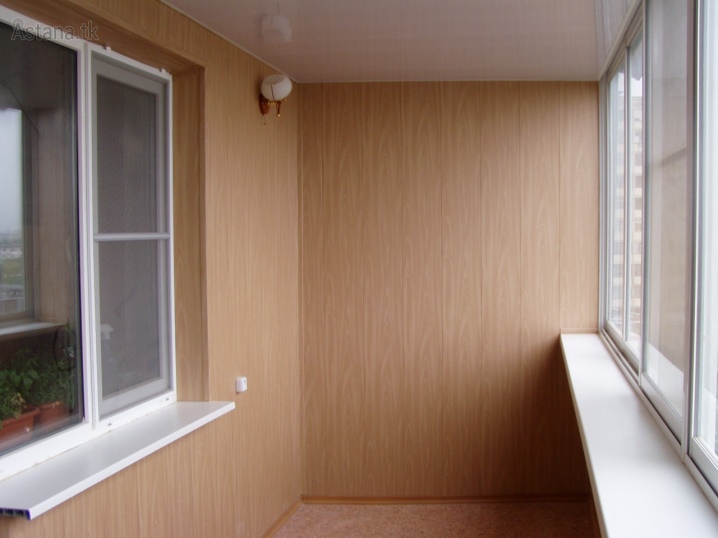
What equipment is needed to make furniture for the balcony:
- building level;
- impact drill, jigsaw, hammer drill;
- drill;
- hammer, hacksaw, screwdrivers;
- fasteners;
- furniture fittings;
- tape measure, measuring tape, pencil.

The development of the model of the future cabinet is consistent with its purpose, based on this, functional and decorative elements are selected. If they plan to plant flowers and seedlings on the balcony, some of the shelves are made open, since the plants need the sun. A simple cabinet with a minimum of decor is suitable for a workshop. The practical component is also important when the loggia is combined with the dining room: the furniture will become part of the kitchen set.
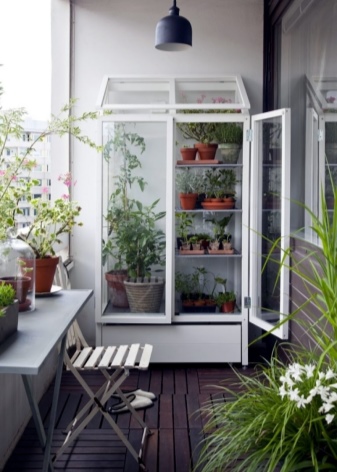
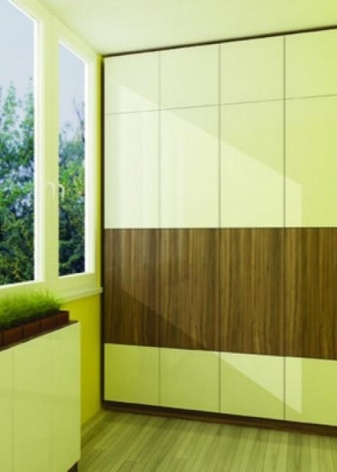
Making measurements
Buying building materials begins with measuring work. It is required to decide on three values: height, width and depth of the cabinet. For these purposes, the area of the balcony is measured using a ruler, pencil and tape measure and deciding which part of the loggia the future product will occupy. The depth of the shelves should also be taken into account: the capacity of the piece of furniture depends on this.
If there was another cabinet on the balcony earlier, you can take its dimensions as a basis.
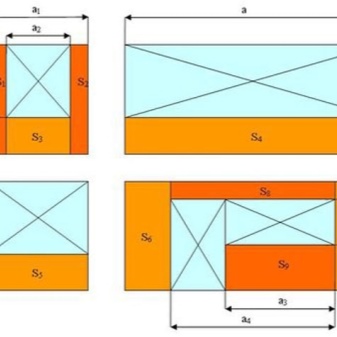
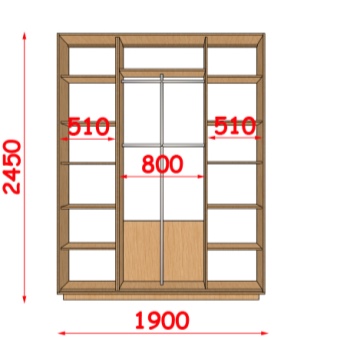
At this stage, the list of fasteners, their number and size is also determined. Fittings, like materials, are sold in hardware stores. If possible, it should be indicated on the diagrams in order to subsequently properly assemble the cabinet.
Door options
Balcony furniture can be open or equipped with doors. The latter elements occupy the entire height of the cabinet or only part of it. Sometimes the doors are placed only in the lower part, and fans of modern style and non-standard shapes may prefer asymmetrical doors. Based on the design features, they are divided into several types:
- Swing. The cheapest and most common option.For the manufacture of these parts, it is enough to take directly the doors and hinges with fasteners on which the sashes will be installed.

- Sliding. Doors of the type used in wardrobes. They slide to the sides, making it easier to access the content. If you plan to make a dressing room out of a loggia, you can place a mirror on the doors. Doors require rails and casters to fit in the top and bottom of the cabinet.
This design saves space due to the fact that the flaps do not obstruct the passage.
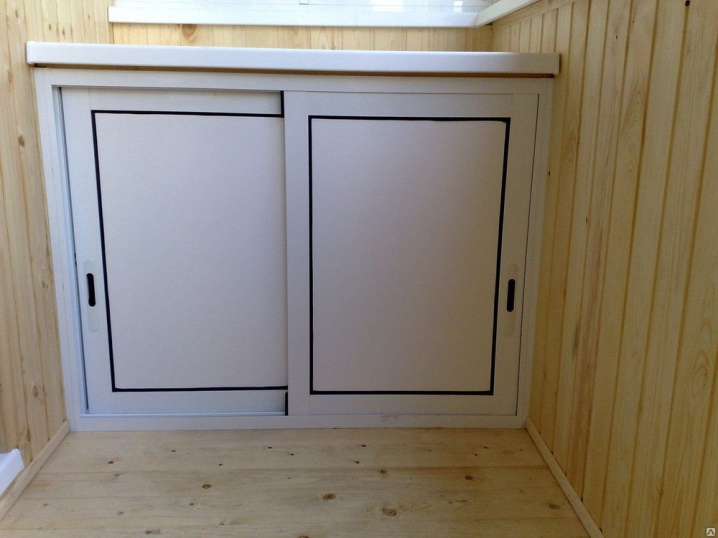
- Roller shuttersA kind of blinds, one of the most expensive options. They are made in the form of a roll, guides and plates. Such doors come in a complete set, so that the owner of the balcony does not need to independently purchase all the parts and fasteners.
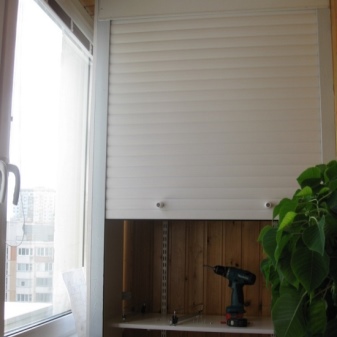
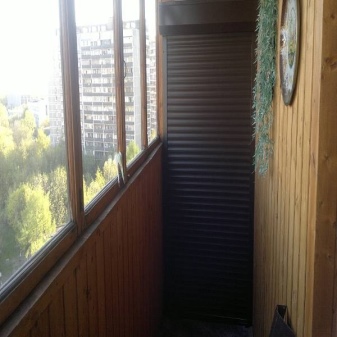
The material for the doors can also be different:
- Chipboard, plywood and lining shutters are lightweight, they are easy to cut into square, rectangular or even oval parts, therefore it is possible to choose an original furniture design.
- Doors made of natural wood are characterized by massiveness, durability, give the cabinet nobility, but such elements will be heavy and not the most practical.
How beautiful to make the most corner cabinet?
In the limited space of the balcony, every centimeter is taken into account, so you have to give preference to compact furniture. A corner cabinet will save space and not take up part of the window opening. The advantage is the fact that this way there will be more light in the room.
Corner furniture has a non-standard shape: on one side of the model it is narrower than on the other. You can make a cabinet in the shape of a triangle, polyhedron or square with a beveled side. The wide part is located against the wall, the narrow one is adjacent to the balcony facade. A winning option would be to equip the wardrobe with sliding doors, as this will save even more space.

Stages of manufacturing a corner cabinet:
- Creation of sketches of future furniture. When the owner of the balcony does not have experience, it is better to take existing models as a basis and modify their dimensions depending on the available space.
- Determination of the number of fittings, fasteners, hardware. To fix the shelves, it is recommended to use corners and self-tapping screws.
- Measurements. At this stage, measurements are taken from the floor to the estimated height of the cabinet, and the width is determined. When calculating the elements of the frame, the dimensions are reduced by the thickness of the lining, they make up the space for the gaps.
- Assembling the frame. The first step is to install the upper and lower bars - they must be completely identical. Installation is carried out using corners. The length of the self-tapping screws is selected such that it would guarantee the strength of the joints and, at the same time, would not deform the cabinet parts.
- Installation of vertical parts. It is most convenient to work on a flat surface and only then place the frame against the wall. At this stage, it is important not to make mistakes. If the parts are mounted crookedly, they must be fixed on a new one, otherwise the finished product will be fragile.
- Installation of shelves. The distance between them can be the same or different. In the latter case, it will be possible to store both small and larger items.
- Cabinet cladding and door installation. Top, bottom and sides must be sized to fit the frame. In the lower part, you can place the legs or do without them if the cabinet will stand directly on the floor. The selected type of sash is installed using fasteners.
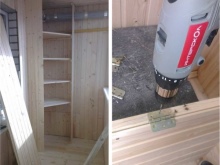
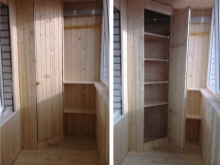
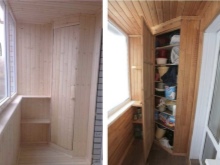
At the last stage, the selected type of sash is mounted, if necessary, the surfaces are painted or varnished. It is recommended to use special impregnations to make furniture resistant to high temperatures and moisture.
We make a wardrobe
The sliding door system saves space, allows efficient use of niches and recesses. In preparation for creating a cabinet, they do the same operations as in the manufacture of other pieces of furniture: they carry out measuring work, draw a diagram, determine the exact number and size of parts. The fabrication of the frame, its sheathing and the installation of shelves are also done in a similar way.
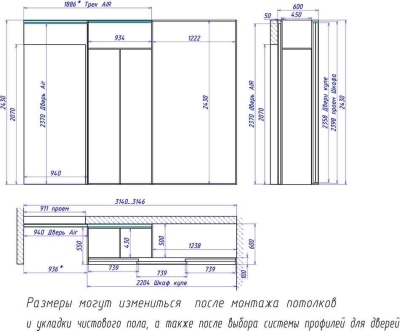
There are three options for installing door leaves:
- top guide. The solution is highly durable. In this case, the profile is at the top;
- bottom guide. Easy to implement system. When choosing rollers, take into account that they will take on the maximum load;

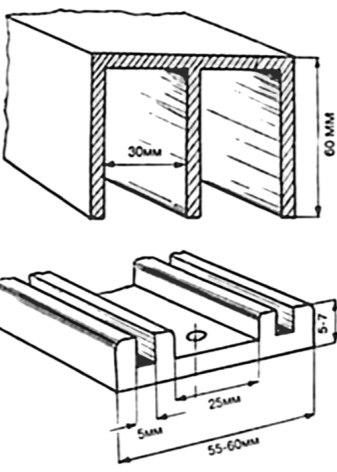
- monorail. One of the most durable options. Each sash uses its own guides, they are fixed both above and below.
Door leaves are attached to the selected system, after which finishing work is carried out. When raw materials have been used, they are sanded, laminated or pasted over with decorative paper.
A more detailed process for making a wardrobe on a balcony can be seen in the following video:
Making an inline model
Built-in wardrobes are one of the most practical and easy-to-manufacture pieces of furniture. Their creation requires a minimum of effort, since only the racks, shelves and doors need to be installed. The advantage of the model is its compactness. The cabinet located in a niche or across the loggia does not take up space in the aisle, it serves as a functional continuation of the wall.

Preliminary work is carried out the same as in the manufacture of the above-mentioned cabinet options: we take measurements, a drawing, etc. Next, the frame is installed. For this purpose, a wooden beam with a section of 40x40 or 50x50 mm is suitable. You can also use plasterboard profiles, metal elements.
The latter are characterized by maximum strength, anti-corrosion coating and long service life.
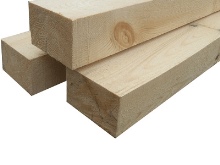
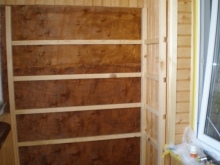
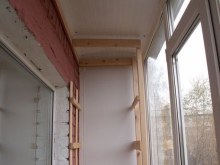
For shelves, sheet materials are predominantly taken, from which it is easier to cut parts of the required dimensions. The elements are attached to specially prepared places using self-tapping screws or dowels. For installation, angles can be used that are attached directly to the wall.
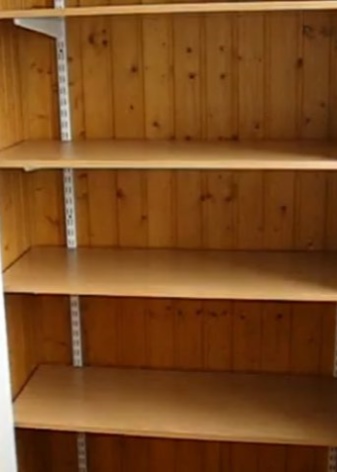
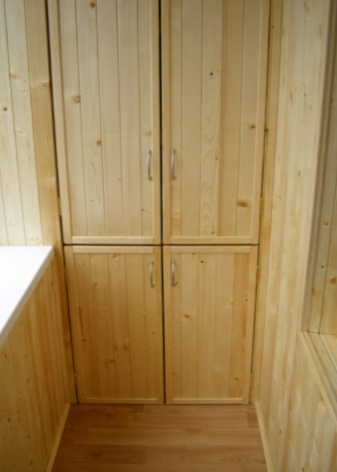













The comment was sent successfully.